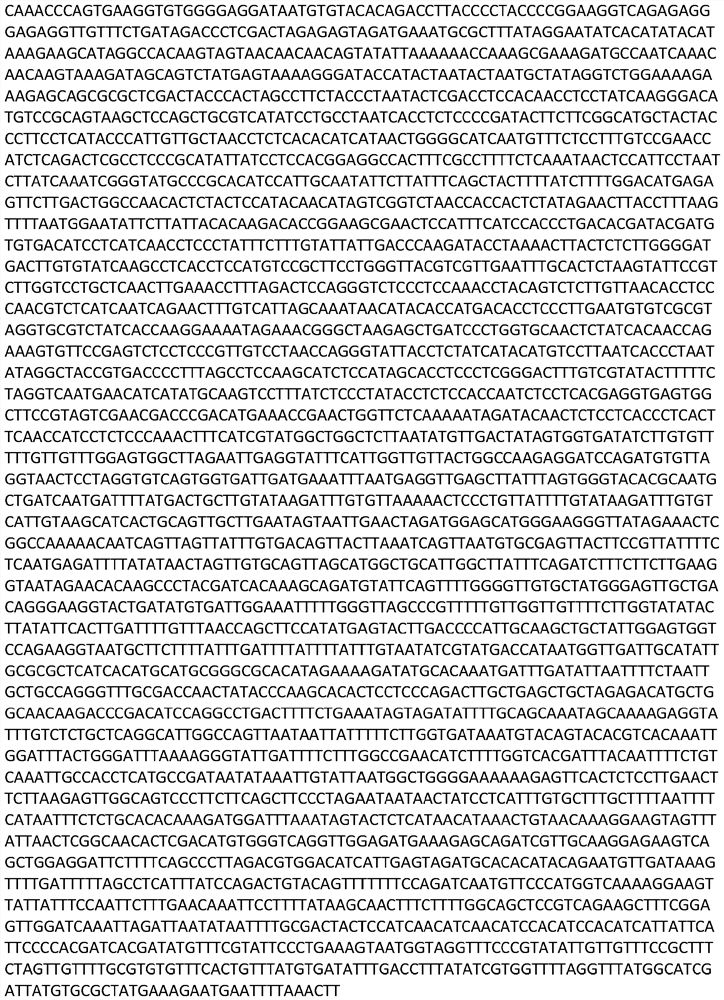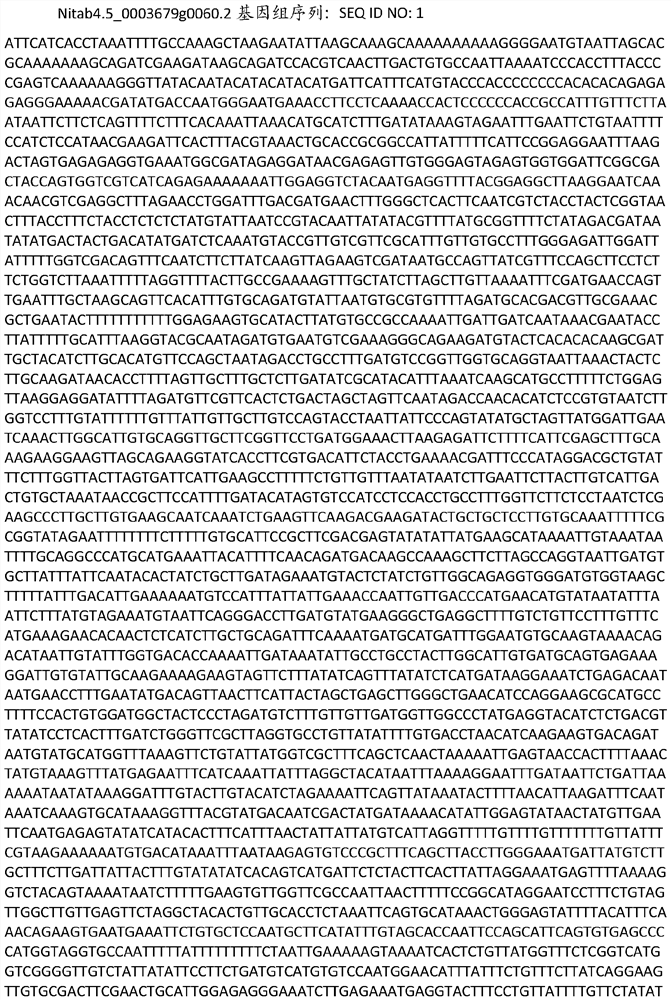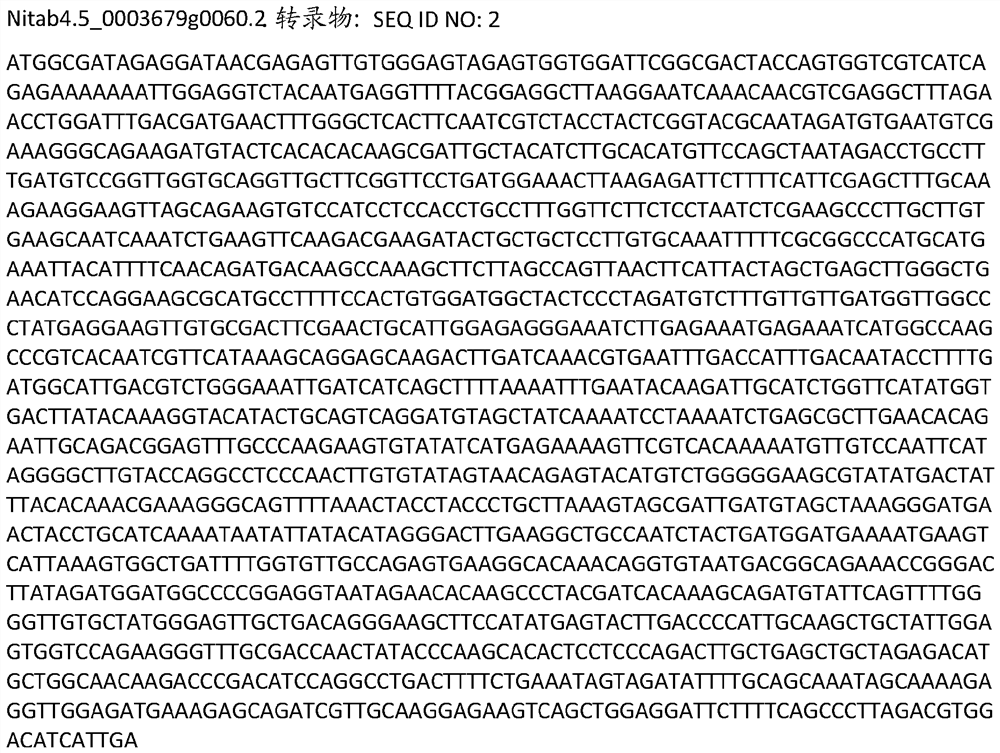Method of modulating the alkaloid content of a plant
An alkaloid and plant technology, which is applied in the fields of regulating the expression and/or activity of polypeptides encoded by genes, regulating polypeptide constructs, smoking products, regulating gene expression and/or activity, and can solve the problems of complex alkaloid content, etc.
- Summary
- Abstract
- Description
- Claims
- Application Information
AI Technical Summary
Problems solved by technology
Method used
Image
Examples
Embodiment 1
[0503] Example 1 - Transient overexpression of protein kinases reduces alkaloid content in leaves
[0504] Methods and Materials
[0505] clone
[0506] protein kinase expression vector
[0507] The gene sequence (SEQ ID No. 1) was amplified from a Gateway™ compatible cDNA library using primers located outside of the restriction sites flanking the gene sequence. The gene sequence is then transferred to an expression vector.
[0508] The resulting plasmid was sequenced and transformed by heat shock into Agrobacterium tumefaciens GV3101 pMP90 and transiently expressed in TN90 leaves.
[0509] transient gene expression
[0510] Agrobacterium tumefaciens GV3101 strains carrying the construct of interest were grown overnight in Luria-Bertani (LB) medium supplemented with appropriate antibiotics. The culture was spin down and resuspended to OD600 in a buffer containing 10 mMMgCl2, 10 mM 2-(N-morpholino)ethanesulfonic acid (MES) pH 5.6 and 100 µM acetosyringone =0.6 and incub...
Embodiment 2
[0523] Example 2 - Virus-induced gene silencing (VIGS) of protein kinases increases alkaloid content in leaves
[0524] Virus-induced gene silencing (VIGS)
[0525] For virus-induced gene silencing, a 248-nucleotide cDNA fragment was synthesized and the following primers were used: Nitab4.5_0003679g0060.2_InFusion 5' TGAGTAAGGTTACCGAATTC (SEQ ID No. 5); and Nitab4.5_0003679g0060.2_InFusion 3' CTCGAGGCCCGGGCATGTCC (SEQ ID No. 6), using the In-Fusion cloning kit to clone into pTV00 (between EcoRI and XhoI sites) to form TRV2-Nitab4.5_0003679g0060.2.
[0526] The plasmid was then transformed into Agrobacterium tumefaciens GV3101.
[0527] 248-nucleotide cDNA fragment SEQ ID No. 4.
[0528] TRV vectors containing both (TRV RNA1 ) and (TRV RNA2 ) containing the targeted nucleotide sequence were propagated separately in Agrobacterium tumefaciens. These cultures were mixed (1:1) and syringe infiltrated into 2-week old TN90 plants. Silencing effects were assessed five weeks after ...
Embodiment 3
[0532] Example 3 - Protein Kinase Activity
[0533] The wild-type protein kinase (having the amino acid sequence shown in SEQ ID No. 3) and the kinase-inactive form (K308M variant) having a mutation at amino acid residue 308 of SEQ ID NO. 3 were transformed into Rosetta 2 (DE3 ) cells and plated on LB plates supplemented with appropriate antibiotics.
[0534] Cultures prepared from single colonies were grown until OD600 = 0.3-0.4. The culture was then moved to the relative induction temperature (37 °C). When the cultures had reached an OD600 of 0.6-0.8, they were induced with 0.5 mM IPTG for 3 hours. Cells were harvested by centrifugation at 4000 rpm for 20 minutes at 4°C. By pipetting in 2 ml lysis buffer (25 mM HEPES pH7.5, 0.2 M NaCl, 1 mM DTT, 1 mM EDTA, 0.2 mM PMSF, 1 mg / ml lysozyme, 0.01 U / µl Benzonase, protease inhibitors), the The pellet was resuspended, then freeze-thawed at -80°C and centrifuged at 20k x g for 30 minutes. The supernatant was then diluted 1 / 2 i...
PUM
 Login to View More
Login to View More Abstract
Description
Claims
Application Information
 Login to View More
Login to View More - R&D
- Intellectual Property
- Life Sciences
- Materials
- Tech Scout
- Unparalleled Data Quality
- Higher Quality Content
- 60% Fewer Hallucinations
Browse by: Latest US Patents, China's latest patents, Technical Efficacy Thesaurus, Application Domain, Technology Topic, Popular Technical Reports.
© 2025 PatSnap. All rights reserved.Legal|Privacy policy|Modern Slavery Act Transparency Statement|Sitemap|About US| Contact US: help@patsnap.com



